Galapagos Species Database
The Galapagos Species Database shares the information about the species from our Natural History Collections.
Mimus parvulus
Cucuve de Galápagos, Galapagos Mockingbird
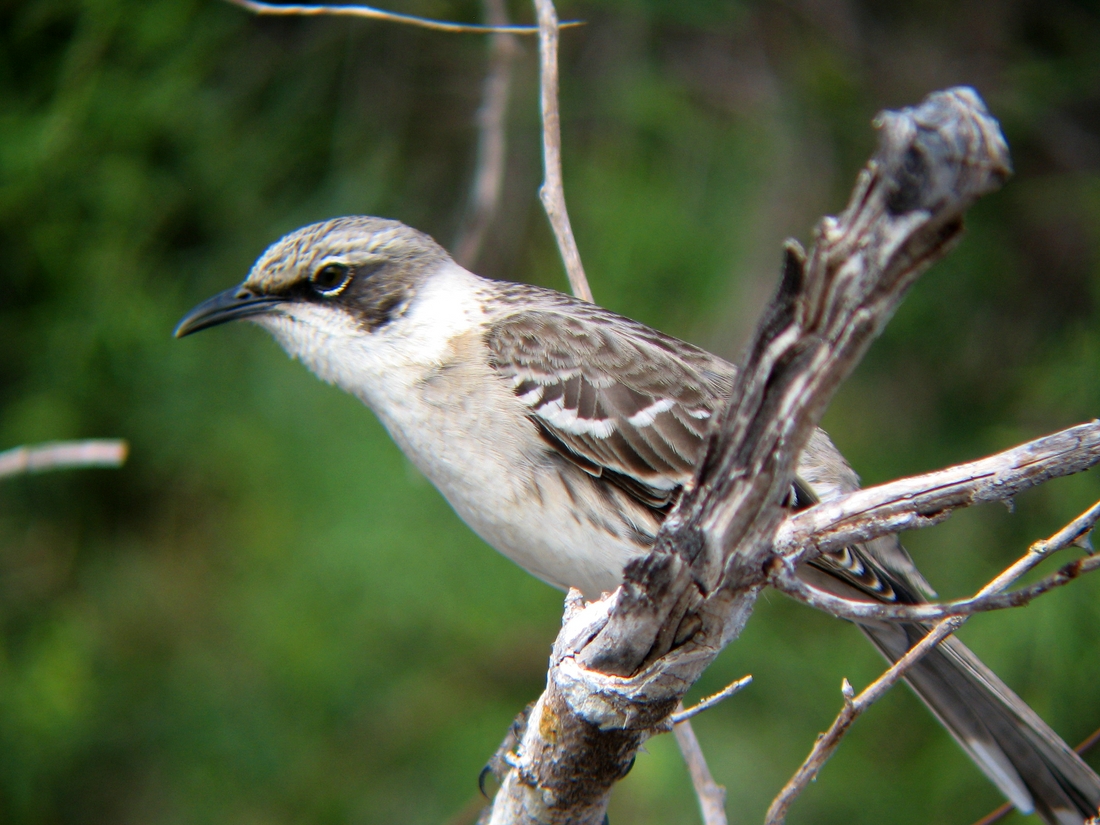
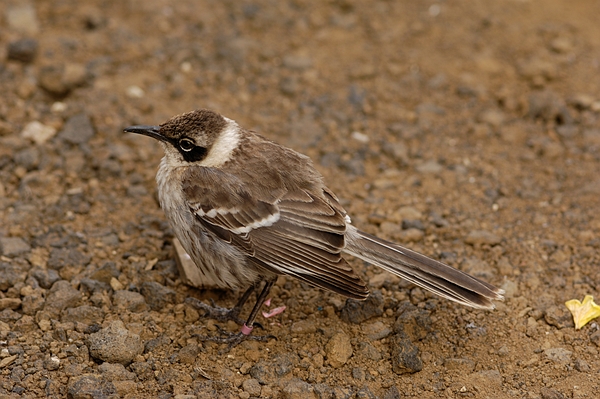


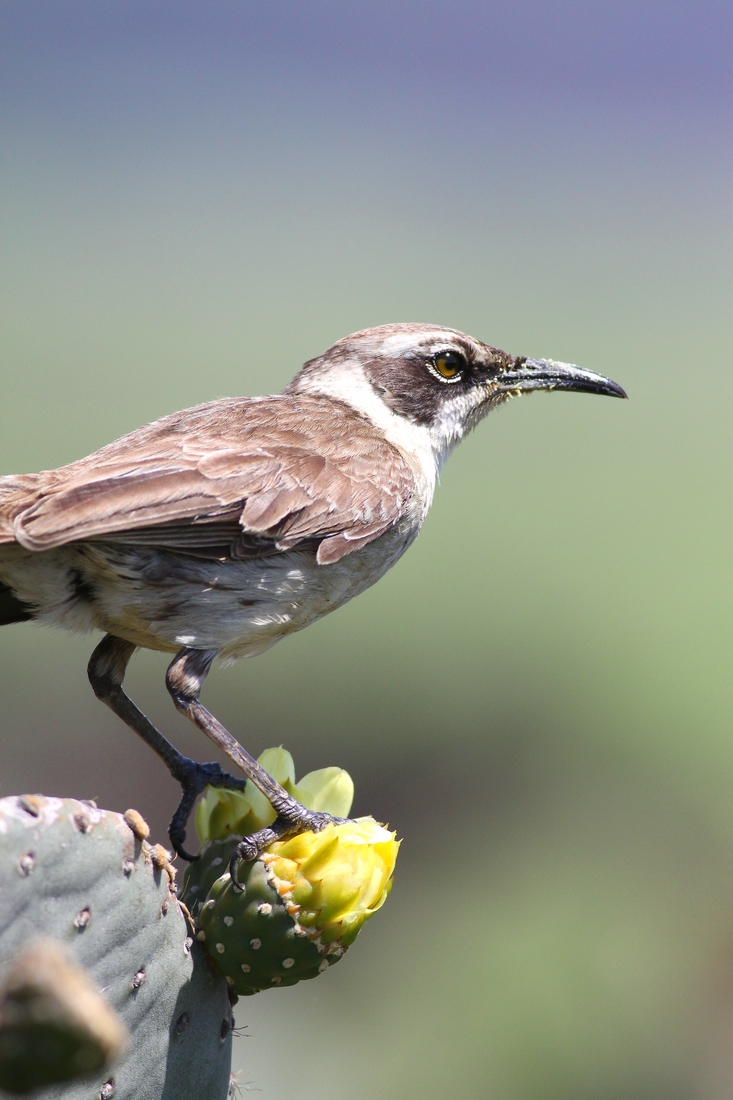
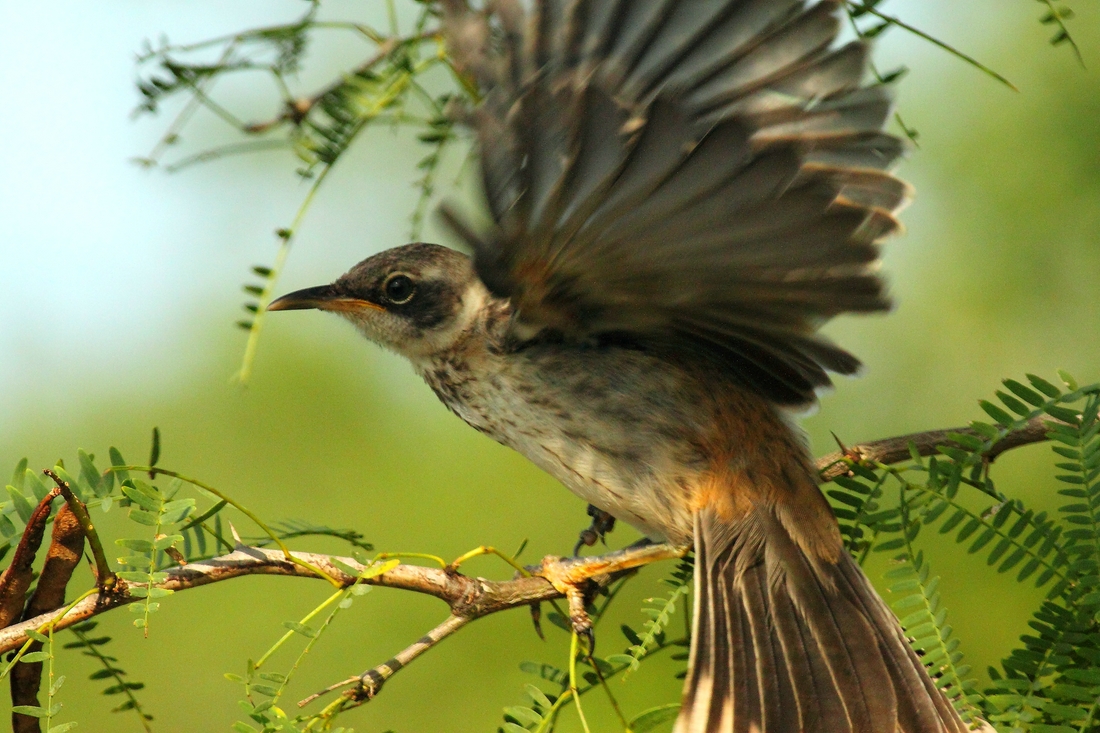

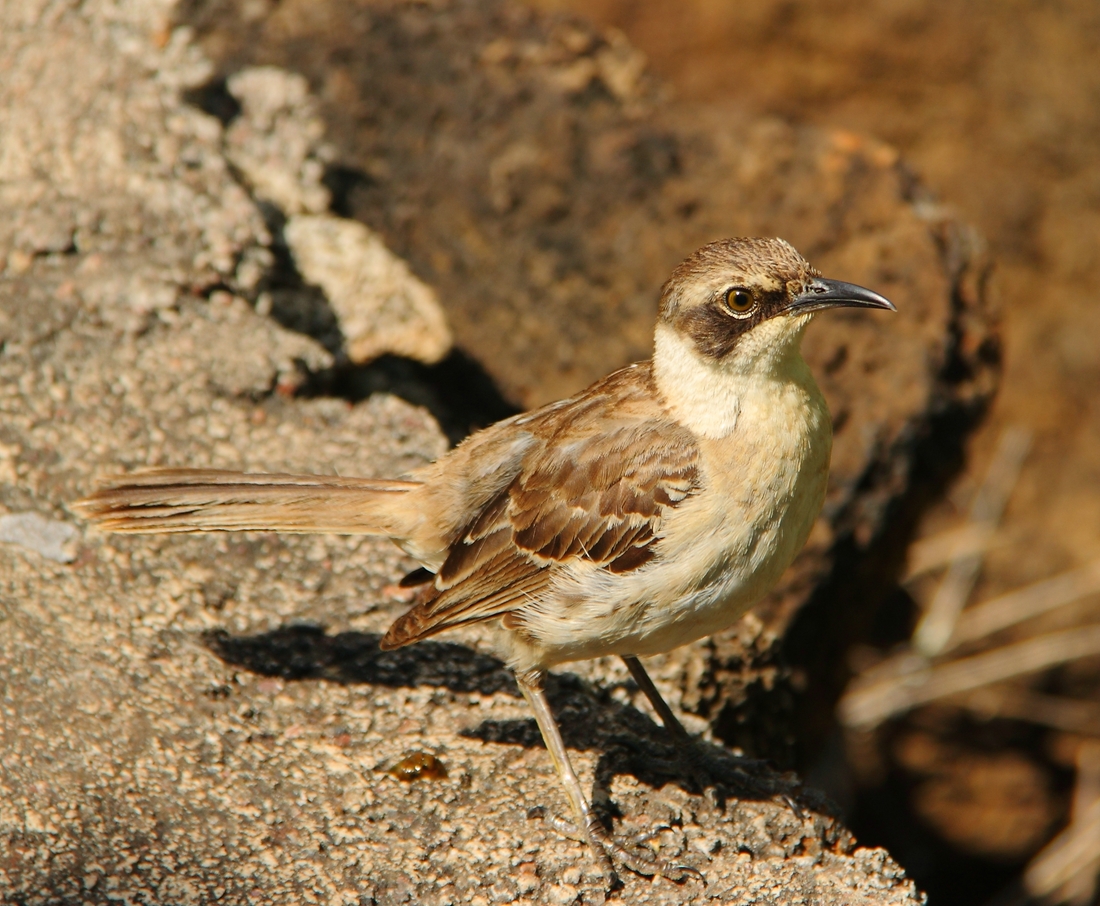
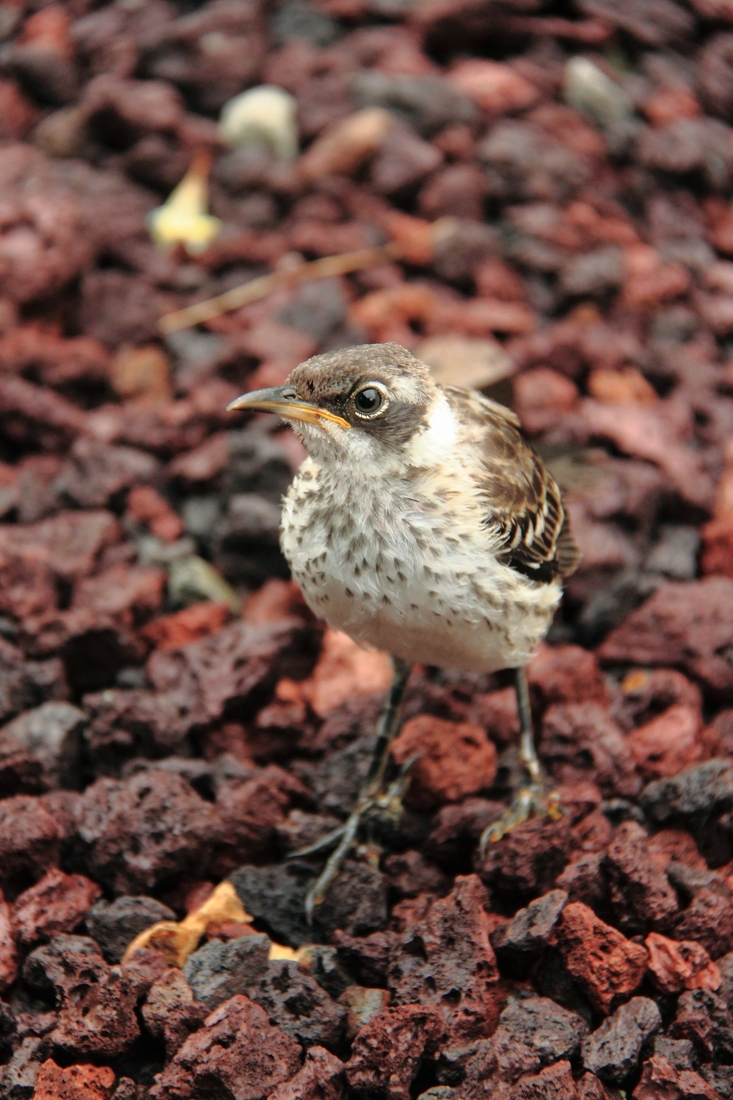
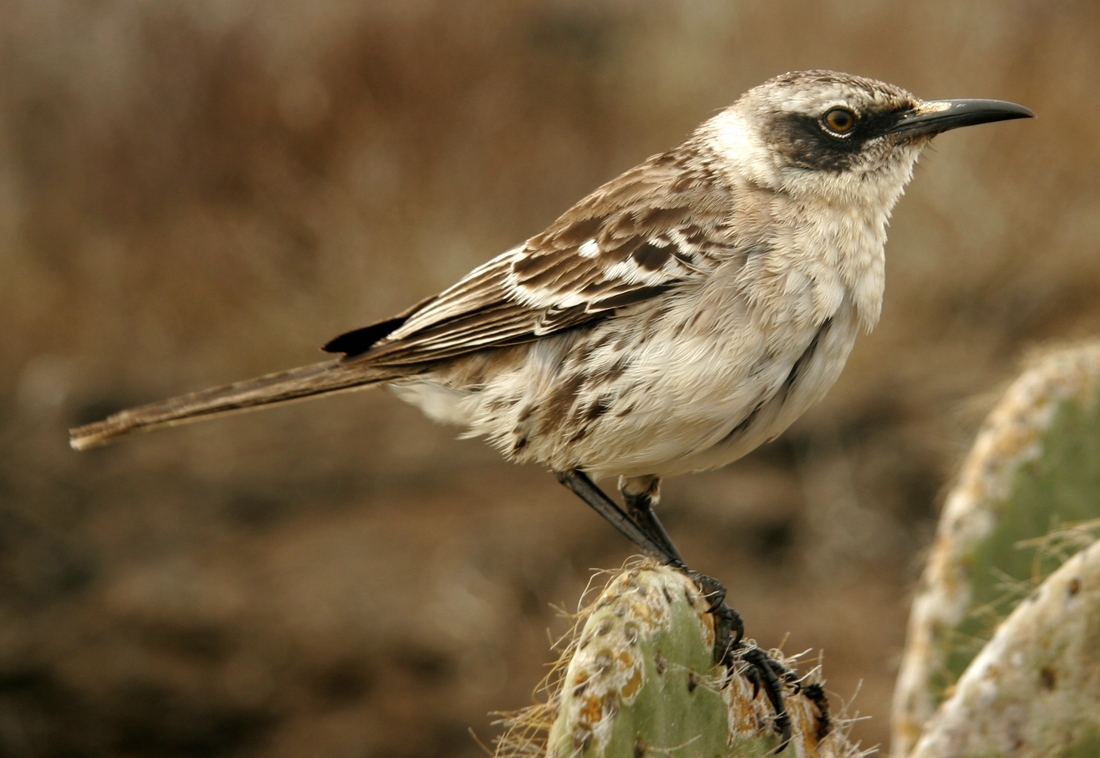


Threats Threats seem to be mainly from black rats, to a less extent from cats, from parasites and from diseases. Mockingbirds are affected by avian pox virus and the parasitic fly Philornis. Pox virus increases mortality of juveniles after fledgling.
Domain
Eukaryota
Kingdom
Animalia
Phylum
Chordata
Class
Aves
Order
Passeriformes
Family
Mimidae
Genus
Mimus
Species
parvulus
Taxon category: Accepted
Syn.: Orpheus parvulus Gould, 1837; Nesomimus parvulus Gould, 1837, Nesomimus parvulus parvulus Gould, 1837; Nesomimus parvulus barringtoni Rothschild, 1898 , Nesomimus parvulus blindloei Ridgway, 1894; Nesomimus parvulus personatus Ridgway, 1890; Nesomimus parvulus wenmani Swarth; Nesomimus parvulus hulli Rothschild; 1898; Nesomimus parvulus bauri Ridgway, 1894
Taxon origin: Endemic
Preference for an altitude zone in Galapagos: Coastal zone - transition zone
Habitat preferences: Inhabits arid open lowland scrub, scrubby woodland with scattered trees (Bursera), arborescent cacti (Opuntia) and deciduous forest but can also be found in low numbers in the agricultural area and humid Scalesia forest.
Feeding preferences: Feeding on ground-dwelling arthropods such as centipedes, crabs and lizards, but also observed eating a wide variety of fleshy fruits (a third of its diet). Seeds in faeces make it a possible disperser of Galápagos and introduced plants. Occasionally peck on iguanas for ticks. Observed drinking blood from marine and land iguanas on Santa Fe.
Trophic role: Omnivorous
Reproductive biology: Pairing is mostly monogamous but polygyny also occurs. They generally build nests in cactus or acacia trees. Mockingbirds are permanently territorial with groups dominated by an alpha male and defended cooperatively although this behaviour varies among islands. Groups of 2 to >20 individuals that can include several breeding pairs defend territories with complex dominance relationships within the groups. Some adults - who may or may not breed - are helpers and contribute to rearing the youngs. They are more likely to help closely related chicks.
Distribution origin: In common with all other Mimus, this species is closely related to species from North America and the Caribbean, rather than species from South America, indicating long distance dispersal.
Map of specimen collection localities or observation records for this species in our collections database.
Distribution: Present on Santa Cruz, Santa Fe, Santiago, Isabela, Fernandina, Pinta, Marchena, Genovesa, Darwin, Wolf Island. Except on Pinzón where there are only 2 old sightings (1906 and 1968).
- Abbott, I. Abbott, L.K. (1973) New distribution records of 65 plant species within the Galapagos Archipelago. Charles Darwin Research Station (CDRS), unpublished.
- Wiedenfeld, D.A. (2006) Aves, the Galapagos Islands, Ecuador. Check List 2006 2(2): 1-27.
- Jiménez-Uzcátegui, G. Milstead, B., Márquez, C., Zabala, J., Buitrón, P., Llerena, A., et al. (2007) Galapagos vertebrates: endangered status and conservation actions. Galapagos Report 2006–2007. Charles Darwin Foundation, Puerto Ayora, p. 104–110.
- Harris, M.P. (1973) The Galápagos avifauna. Condor 75(3): 265-278.
- Salvin, O. (1876) On the avifauna of the Galápagos Archipelago. Transactions of the Zoological Society of London 9: 447-510.
- Arbogast, B.S. Drovetski, S.V., Curry, R.L., Boag, P.T. & Seutin, G.l (2006) The origin and diversification of Galápagos mockingbirds. Evolution 60: 370-382.
- Castro, I. Phillips, A. (1996) A Guide to the Birds of the Galapagos Islands. Christopher Helm Publishers Ltd., London.
- Fessl, B. Tebbich, S. (2002) Philornis downsi - a recently discovered parasite on the Galápagos archipelago - a threat to Darwin's finches? Ibis 144: 445-451.
- Smith, E.A. (1877) Mollusca. In: Günther, A.: Account of the zoological collections made during the visit of H.M.S. "Petrel" to the Galapagos Islands. Proceedings of the Zoological Society of London (1877): 69-73, 91-93.
- Jiménez-Uzcátegui, G. Wiedenfeld, D.A. & Parker, P.G. (2007) Virurela aviar en especies silvestres (Passeriformes) en la isla Santa Cruz, Galápagos, Ecuador. Brenesia 67: 29-34.
- Thiel, T. Whiteman, N.K., Tirapé, A., Baquero, M. I., Cedeño, V., Walsh, T., Jiménez-Uzcátegui, G. & Parker, P.G. (2005) Characterization of canary pox-like viruses infecting endemic birds in the Galapagos Islands. Journal of Wildlife Diseases 41(2): 342-353.
- Vargas, H. (1987) Frequency and effect of pox-like lesions in Galapagos Mockingbirds. Journal of Field Ornithology 58(2): 101-102.
- Swarth, H.S. (1931) The Avifauna of the Galapagos Islands. Occ. Pap. Calif. Acad. Sci. 18: 1-299.
- McQuistion, T.E. (1990) Polysporella genovesae n. gen., n. sp. (Apicomplexa: Eimeriidae) from the Fecal Contents of the Galapagos Mockingbird, Nesomimus parvulus (Passeriformes: Mimidae). Transactions of the American Microscopical Society 109(4): 412-416.
- Fessl, B. Couri, M.S. & Tebbich, S. (2001) Philornis downsi Dodge & Aitken, new to the Galapagos Islands (Diptera, Muscidae). Studia Dipterologic 8: 317-322.
- Kleindorfer, S. Dudaniec, R.Y. (2006) Increasing prevalence of avian poxvirus in Darwin’s finches and its effect on male pairing success. Journal of Avian Biology 37: 69-76.
- Jiménez-Uzcátegui, G. Betancourt, F. (2008) Avifauna vs automotores. Informe Galápagos 2007-2008. FCD, PNG & INGALA. Puerto Ayora, Ecuador. p. 111–114.
- Guerrero, A. Tye, A. (2011) Native and introduced birds of Galapagos as dispersers of native and introduced plants. Ornitología Neotropical 22:207-217.
- Curry, R.L. (1989) Geographic variation in social organization of Galapagos (Ecuador) Mockingbirds: ecological correlates of group territoriality and cooperative breeding. Behavioral Ecology and Sociobiology 25:147-160.
- Hoeck, P. Bollmer, J., Parker, P. & Keller, L. (2010) Differentiation with drift: a spatio-temporal genetic analysis of Galápagos mockingbird populations (Mimus spp.). Philosophical Transactions of the Royal Society of London. Series B, Biological Sciences 365:1127-1138.
- Abbott, I. Abbott, L. (1978) Multivariate study of morphological variation in Galapagos and Ecuadorean mockingbirds. The Condor 80:302-308.
- Curry, R.L. (1988) Group structure, within-group conflict and reproductive tactics in cooperatively breeding Galapagos mockingbirds, Nesomimus parvulus. Animal Behaviour 36:1708-1728.
- Curry, R.L. (1988) Influence of kinship on helping behavior in Galapagos mockingbirds. Behavioral Ecology and Sociobiology 22:141-152.
- Curry, R.L. Anderson, D. (1987) Interisland variation in blood drinking by Galapagos mockingbirds. The Auk 104:517-521.
- Curry, R.L. Grant, P. (1989) Demography of the cooperatively breeding Galapagos mockingbird, Nesomimus parvulus, in a climatically variable environment. Journal of Animal Ecology 58:441-464.
- Fusani, L. Beani, L., Curry, R. & Dessi-Fulgheri, F. (1994) Analysis of some calls of a Galapagos mockingbird (Nesomimus parvulus). Ethology Ecology & Evolution 6:423.
- Grant, P.R. Grant, N. (1979) Breeding and feeding of Galapagos mockingbirds, Nesomimus parvulus. The Auk 96:723-736.
- Kinnaird, M. Grant, P. (1982) Cooperative breeding by the Galapagos mockingbird, Nesomimus parvulus. Behavioral Ecology And Sociobiology 10:65-73.
- IUCN (2015) The IUCN Red List of Threatened Species. Version 2015-4. <www.iucnredlist.org>. Downloaded on 20 November 2015.
- Freile, J.F. Santander, T., Jiménez-Uzcátegui, G., Carrasco, L., Cisneros-Heredia, D., Guevara, E., Sánchez-Nivicela, M., Tinoco, B. (2019) Lista Roja de las aves del Ecuador Quito, Ecuador. 97 pp.
- GBIF Secretariat (2021) GBIF Backbone Taxonomy. Https://doi.org/10.15468/39omei Accessed via https://www.gbif.org/species/5284517



Feeding type: Polyphagous
arthropods, lizards, fruits, peck on iguanas for ticks.